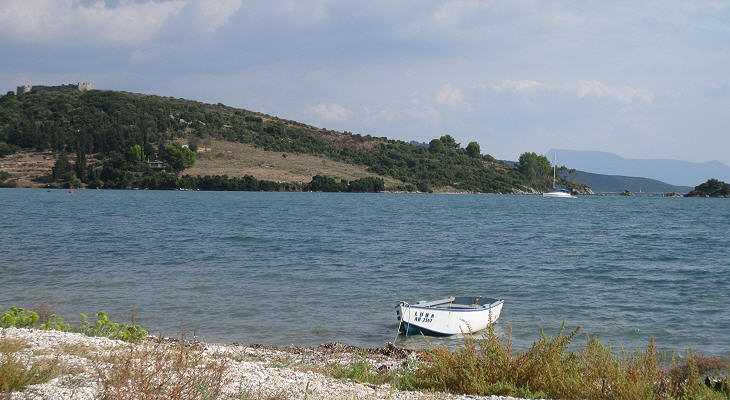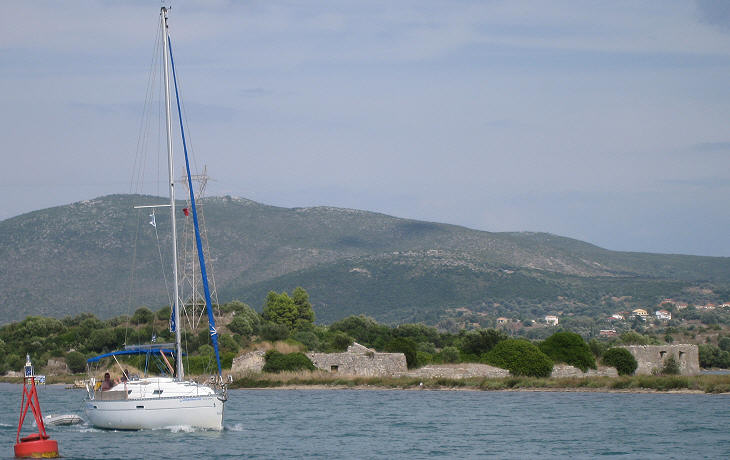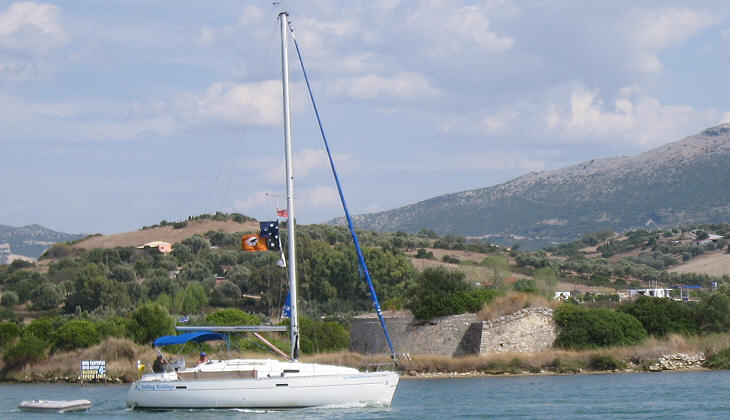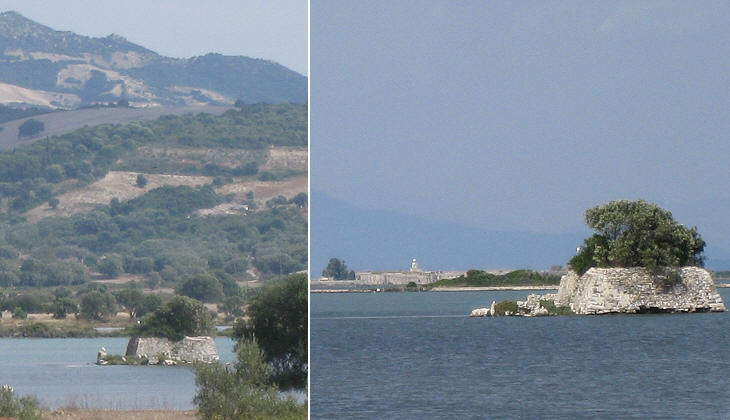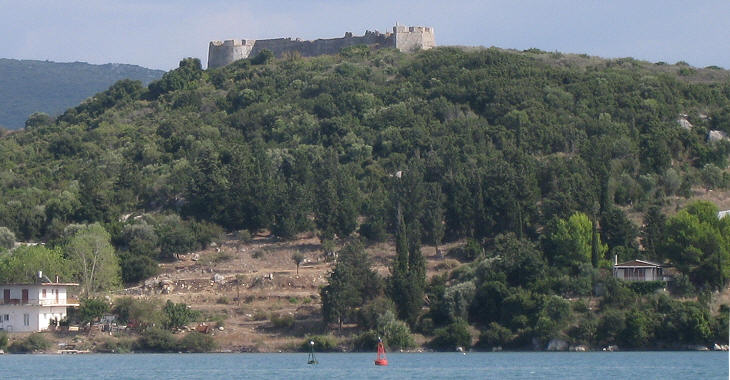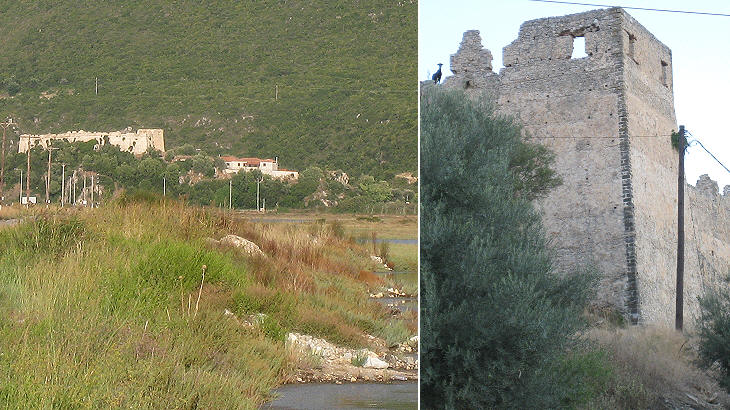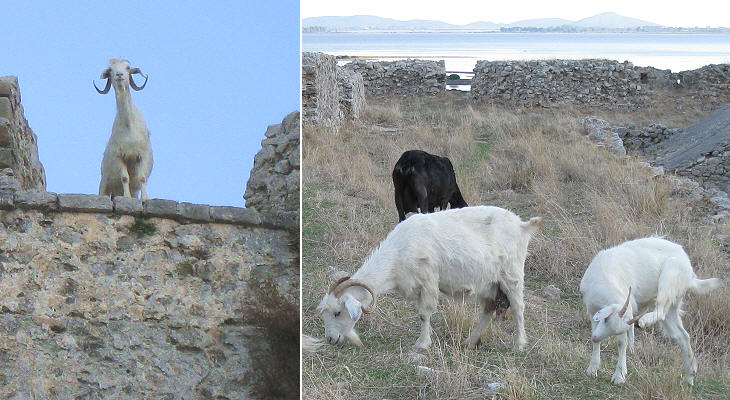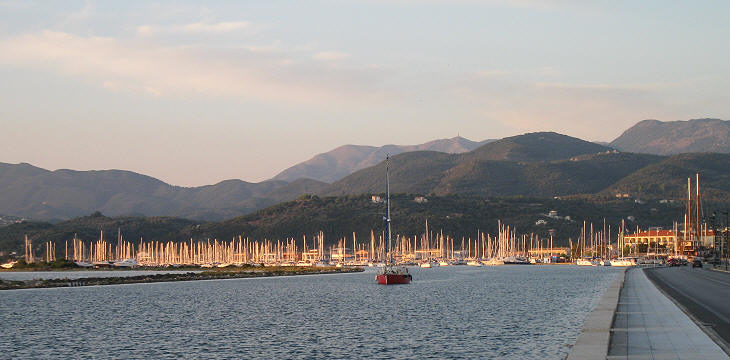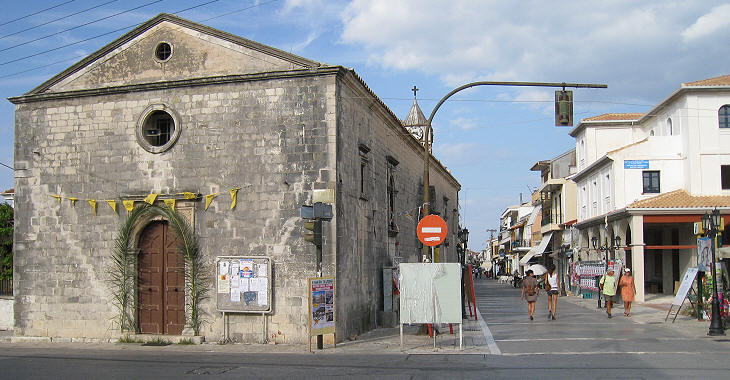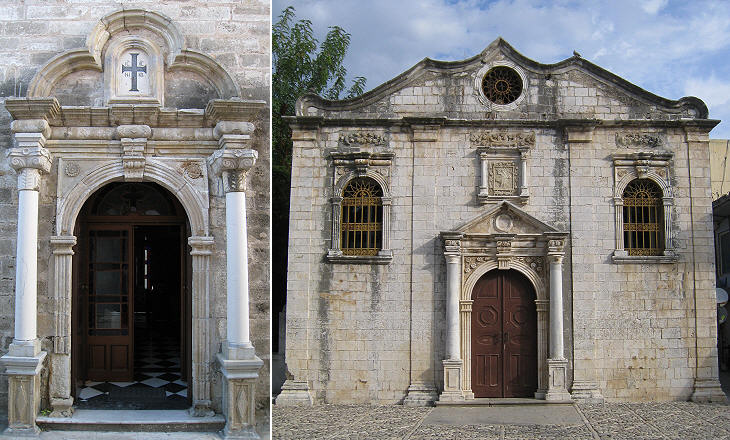  What's New! Detailed Sitemap All images © by Roberto Piperno, owner of the domain. Write to romapip@quipo.it. Text edited by Rosamie Moore. Page revised in November 2009. |
 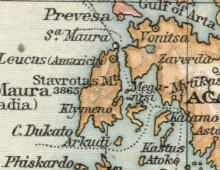 Santa Maura (Lefkada) - page two
Santa Maura (Lefkada) - page two
Key dates: 1362 - 1477 Duchy of Santa Maura (Leucade); it was ruled by the Del Tocco family. 1477 - 1684 Part of the Ottoman Empire (1500-01 temporary Venetian occupation). 1684 - 1797 Venetian possession (1715-16 temporary occupation by the Ottomans). 1797 - 1810 Occupied by the French, then by the Russians, then by the French again and finally by the British.
The southern side of the lagoon is closed by a short sand strip which almost links the island to the mainland.
Today the lagoon and the Gulf of Drepano which lies between Santa Maura and the mainland are used as a training area for learning how to sail. The boats are usually moored at the marina of Lefkada (the main town) and they reach the sea through a passage which in the past was controlled by a small fortress.
The fortress consisted of a central isolated circular bastion surrounded by low walls/buildings. The Venetians developed galeazza, a type of galley which had many cannon. In 1571 its firepower helped the Christian fleet to win victory at Lepanto. The fortress was a sort of anchored galeazza.
A fortified islet where a few cannon could be placed stands in the lagoon midway between its two entrances and between the island and the mainland.
The 1718 Peace of Passarowitz marked the end of the last war between the Ottoman Empire and the Republic of Venice. The Venetians did not take part in the 1737-39 war between Austria and the Ottomans and the latter never threatened the Venetian possessions in the Ionian Sea. The Ottoman fortress opposite the southern entrance to the lagoon was built in 1806, when Santa Maura was under Russian control. Ali Pacha, the almost independent governor of Ioanina had in mind to occupy the island, but in July 1807 the Treaty of Tilsit assigned the Ionian Islands to France and Ali Pacha abandoned his project. For this reason the fortress remained half finished.
The small fortress was built where there had been an Ottoman monastery (tekke). It was built by Ali Pacha at approximately the same time as St. George's Castle.
The current garrison (September 2009) is composed of a white-bearded elder, his young son and his four wives. At first they are very suspicious of visitors, but after a while they go about their usual business.
Nydri on the eastern coast of the island is its most popular tourist resort, but Lefkada, the main town has an impressive marina; you do not see luxury yachts there, just sailing boats.
Lefkada still retains a Venetian flavour, although not to the same extent as the old town of Corfu.
During the XVIIIth century the wealthiest family of Santa Maura built a series of small churches/chapels, the design of which recalls that of similar Venetian buildings. Return to page one. Excerpts from Memorie Istoriografiche del Regno della Morea Riacquistato dall'armi della Sereniss. Repubblica di Venezia printed in Venice in 1692 and related to this page:
Introductory page on the Venetian Fortresses Pages of this section: On the Ionian Islands: Corfù (Kerkyra) Paxo (Paxi) Santa Maura (Lefkadas) Cefalonia (Kephallonia) Asso (Assos) Itaca (Ithaki) Zante (Zachintos) Cerigo (Kythera) On the mainland: Butrinto (Butrint) Parga Preveza and Azio (Aktion) Vonizza (Vonitsa) Lepanto (Nafpaktos) Atene (Athens) On Morea: Castel di Morea (Rio), Castel di Rumelia (Antirio) and Patrasso (Patra) Castel Tornese (Hlemoutsi) and Glarenza Navarino (Pilo) and Calamata Modon (Methoni) Corone (Koroni) Braccio di Maina, Zarnata, Passavà and Chielefà Mistrà Corinto (Korinthos) Argo (Argos) Napoli di Romania (Nafplio) Malvasia (Monemvassia) On the Aegean Sea: Negroponte (Chalki) Castelrosso (Karistos) Oreo Lemno (Limnos) Schiatto (Skiathos) Scopello (Skopelos) Alonisso Schiro (Skyros) Andro (Andros) Tino (Tinos) Micono (Mykonos) Siro (Syros) Egina (Aegina) Spezzia (Spetse) Paris (Paros) Antiparis (Andiparos) Nasso (Naxos) Serifo (Serifos) Sifno (Syphnos) Milo (Milos) Argentiera (Kimolos) Santorino (Thira) Folegandro (Folegandros) Stampalia (Astipalea) Candia (Kriti) You may refresh your knowledge of the history of Venice in the Levant by reading an abstract from the History of Venice by Thomas Salmon, published in 1754. The Italian text is accompanied by an English summary. Clickable Map of the Ionian and Aegean Seas with links to the Venetian fortresses and to other locations (opens in a separate window) |
